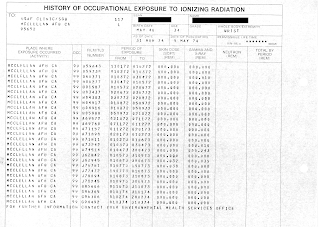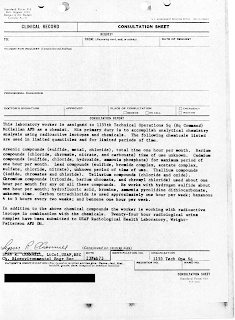Saturday, January 22, 2022
Trip Report - DET 460, 1156th Technical Operations Squadron
Detachment 460
MISSION STATEMENT
The mission of Detachment 460 is to monitor and record natural and man-made seismic disturbances in the earth in conjunction with the Air Force Technical Applications Center’s nuclear treaty monitoring mission.
BACKGROUND
The Air Force Technical Applications Center’s Detachment 460, located at Eielson Air Force Base, Alaska, conducts nuclear treaty monitoring through seismic and atmospheric data collection. Findings from this data is reported to national decision makers through AFTAC’s headquarters at Patrick Air Force Base, Fla. Detachment 460 is a tenant organization of the 354th Fighter Wing at Eielson AFB. It is the largest and most varied detachment of its type of AFTAC’s numerous worldwide detachments.
Det 460 operates and maintains the most comprehensive seismic network in the United States Atomic Energy Detection System (USAEDS). Up until 2016, the detachment managed seven seismic arrays, many of them north of the Arctic Circle. Today, the detachment manages five after the 2016 decommissioning of Attu Island and Alaska Long Period Arrays. The current 35 seismic instruments are spread across these five arrays employing different electronics packages in geologically advantageous sites. The five seismic sites include the local array located at Eielson AFB; the Burnt Mountain array (north of Fort Yukon on the edge of the Arctic National Wildlife Refuge); the Indian Mountain array; the Tatalina array; and the Beaver Creek array located on the Alaska-Canada Border south of the Alaskan town of Tok. This gives Det 460 a comprehensive view of the dynamics of the earth worldwide.
The Det also operates and maintains a network of gaseous and particulate air sampling units to detect airborne signatures of nuclear events. The atmospheric systems are located on Eareckson AFB (Shemya Island), Point Barrow and at Joint Base Elmendorf-Richardson. These five specialized instruments at three different locations round out Det 460’s broad support to a nationally vital mission.
Stretching from far above the Arctic Circle to the Canadian border and out to the Aleutian Island Chain, Det 460’s area of responsibility comprises a vast and unique set of geographic, climatic and cultural challenges. From stifling heat and bugs in the summer to the extreme rigors of the remote Arctic in the winter, detachment personnel routinely overcome significant obstacles to provide a 24/7 vigilant watch for America and its allies.
HISTORY
Detachment 460 has a long and distinguished history in the service of the United States Atomic Energy Detection System. Its roots are actually derived from several AFTAC detachments scattered across the "Last Frontier" in the late 1950s. During this era, there were six detachments and approximately 200 AFTAC personnel in Alaska.
Eielson AFB was activated June 14, 1944. It was known as Mile 26 Airfield, and was an auxiliary field for Ladd field, presently called Ft. Wainwright. Air sampling operations conducted from Alaska in the late 1940s provided the first evidence which confirmed that Russia had exploded an Atomic bomb. Daily surveillance sampling flights were flown from Eielson AFB for the next 25 years.
Subscribe to:
Posts (Atom)
























